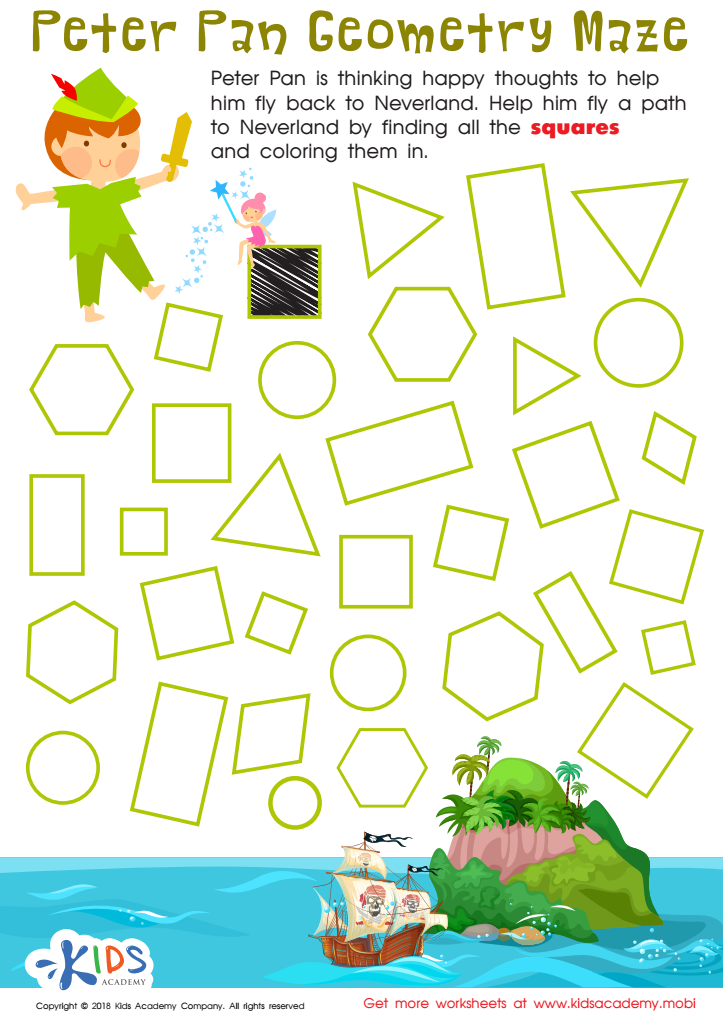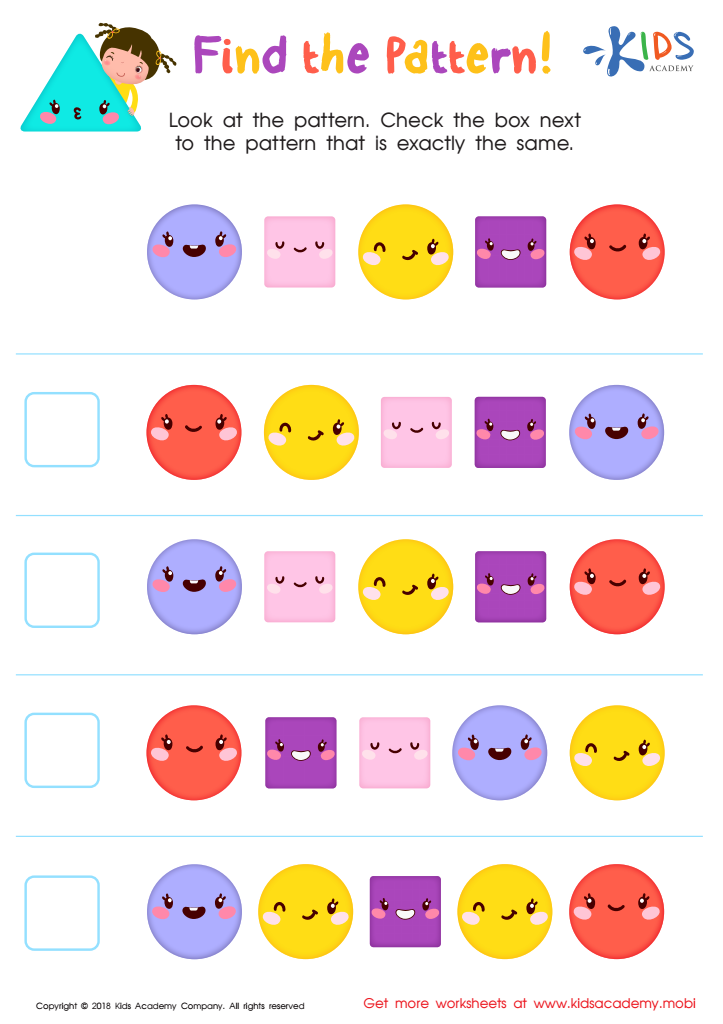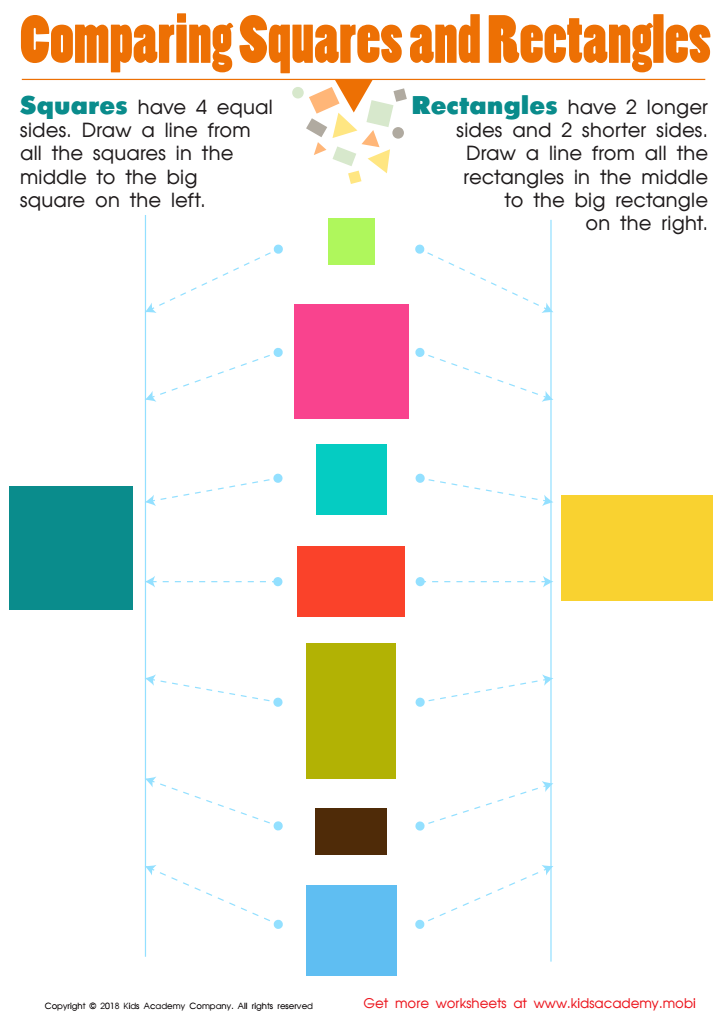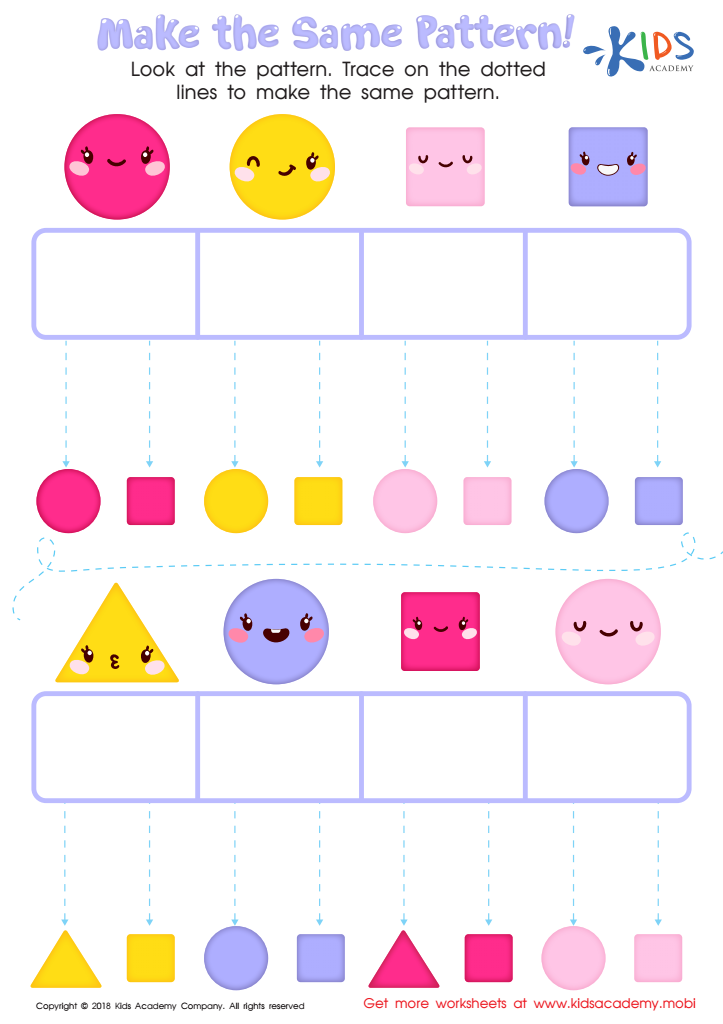Critical Thinking Normal Geometry Worksheets for Ages 4-6
5 filtered results
-
From - To
Explore our engaging Critical Thinking Normal Geometry Worksheets, specifically designed for children aged 4 to 6. These interactive resources enhance young learners' understanding of shapes, spatial relationships, and problem-solving skills through a variety of fun activities. Our worksheets promote critical thinking by encouraging children to identify, compare, and analyze different geometric figures while developing their reasoning abilities. Perfect for home or classroom use, these worksheets provide a solid foundation in geometry while keeping learning enjoyable. Foster your child's curiosity and creativity today with our thoughtfully crafted materials that aid in early math development and critical thinking skills!


Peter Pan Worksheet


Find the Pattern Worksheet


Comparing Squares Rectangles Worksheet


Make the Same Pattern Worksheet


Using Squares to Make Rectangles Worksheet
Critical Thinking Normal Geometry for Ages 4-6 is crucial for young children's cognitive development. At this age, children's brains are like sponges, absorbing new information rapidly. Engaging them in geometrical concepts encourages focus on shapes, sizes, and spatial awareness, laying the groundwork for mathematical understanding.
Critical thinking nurtures analytical skills, enabling children to solve problems effectively. By interacting with geometric puzzles and activities, children learn to compare, classify, and manipulate shapes, fostering curiosity and inventiveness. These experiences not only enhance math skills but also promote logical reasoning, which is vital for future learning across all subjects.
Moreover, early exposure to geometry enriches their ability to visualize and think abstractly, important skills for success in STEM fields. Beyond academics, critical thinking in geometry supports life skills such as decision-making and strategic planning.
For teachers and parents, nurturing these skills helps prepare children for the complexities of the modern world, encouraging lifelong learners who are adaptable and resilient. By focusing on Critical Thinking Normal Geometry, we create opportunities for children to explore, inquire, and build a solid foundation for future academic and social success. Thus, investing in early geometry education for children ages 4-6 is essential for holistic development.
 Assign to My Students
Assign to My Students















